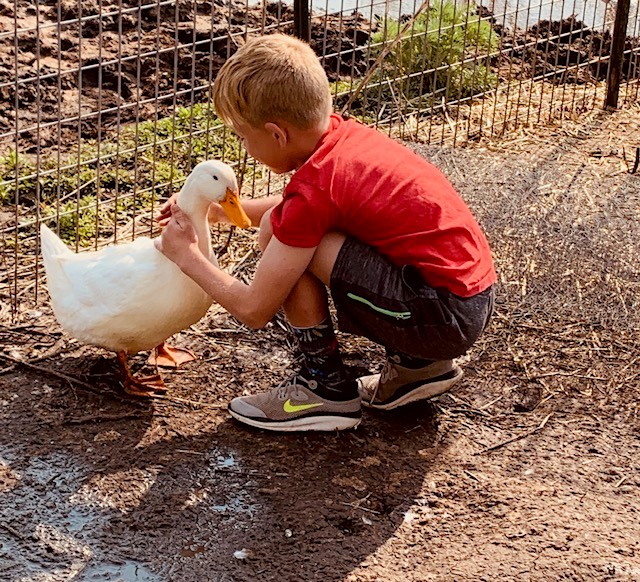This past summer my husband and oldest son decided to order some ducklings from our local agriculture store. Ducklings, as it turns out, can only be ordered in groups of 20. So, one warm June day we drove to the store and gathered the 20 ducklings.
The plan was to raise these ducklings into full grown, egg laying hens so that my son could sell the eggs locally (who knew a half a dozen duck eggs can sell for $7.00?!?). As you can imagine the cute, messy, water loving ducklings grew up quite quickly and in no time at all they were a part of our family and were laying eggs. About that same time I was being asked to come in and model math in some local 4th grade classrooms. These 4th graders were working on NBT.5: “Using strategies based on place value and the properties of operations, multiply a whole number of up to four digits by a one-digit whole number, and multiply two two-digit numbers. Illustrate and Explain the calculation by using equations, rectangular arrays, and/or area models”
As I prepared for the lessons I realized that the 20 ducks at home provided a great math hook and intro to the math of the day. Because, you see, we had a multiplication problem going on at home. If a hen lays an egg every day that is 20 eggs a day, but if there are 30 or 31 days in a month how many eggs can we expect to get? Or, if we are packing the eggs into 6 egg cartons how many cartons will I need to buy at the end of each month to make sure I have enough packaging for all the eggs? How much money could my son expect to make in a month selling 6 eggs for 7 dollars?
When the time came to teach in these 4th grade classrooms I showed a few pictures of the ducks, first as ducklings and then full grown, and then briefly talked about some of the problems my son had to solve in order to be successful with his egg business (and I shared what a mess 20 ducks can be!) Then, with a context and a picture in their mind these 4th graders went right to work solving different multiplication problems based on ducks, eggs, egg cartons, and potential income. When it came time to close the lesson and reflect student’s had much to share on not only what they learned and how the context of the ducks provided a schema to support the mathematics.

Anytime I am in front of learners, students or adults, I want them to feel engaged and see themselves in the math that we are doing. If I can tell a story, show pictures or a short video my students will have a context and an interest in the math that we are doing today. Dan Myer is famous for this with his 3-Act Math Tasks (many others have curated great tasks that follow this same format) where students are hooked into a real life situation and slowly given more information that encourages the learning of the day. Additionally, there is science behind why students are more engaged when storytelling is involved. In the TEDx Talk: The Magical Science of Storytelling David JP Phillips shows the science and the power with storytelling and how our brains respond and are more engaged when a story, and storytelling is involved.
Notice and Wonder:
–What stories are happening or have happened in your life that can be integrated into your math classroom?
-How does sharing quick stories with your students humanize mathematics for your students?
-What is a positive math memory that you have when you were a child? Can that memory be made into a story to share with your students?